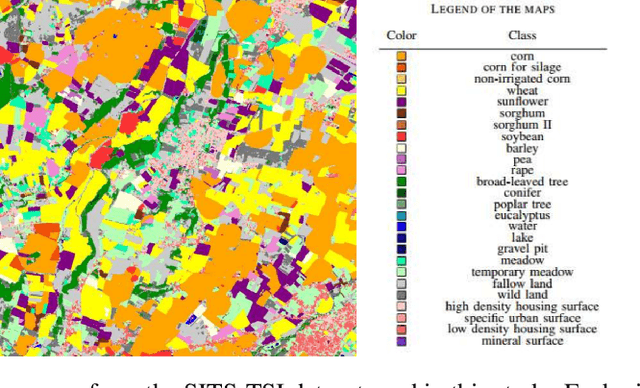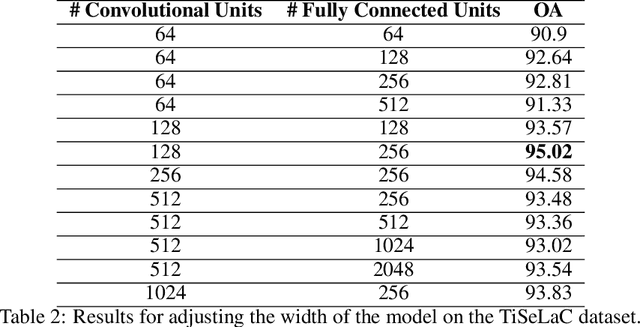James Brock
Investigating Temporal Convolutional Neural Networks for Satellite Image Time Series Classification
Apr 13, 2022



Abstract:Satellite Image Time Series (SITS) of the Earth's surface provide detailed land cover maps, with their quality in the spatial and temporal dimensions consistently improving. These image time series are integral for developing systems that aim to produce accurate, up-to-date land cover maps of the Earth's surface. Applications are wide-ranging, with notable examples including ecosystem mapping, vegetation process monitoring and anthropogenic land-use change tracking. Recently proposed methods for SITS classification have demonstrated respectable merit, but these methods tend to lack native mechanisms that exploit the temporal dimension of the data; commonly resulting in extensive data pre-processing prohibitively long training times. To overcome these shortcomings, this paper seeks to study and enhance the newly proposed method for SITS classification from literature; namely Temporal CNNs. Comprehensive experiments are carried out on two benchmark SITS datasets with the results demonstrating that Temporal CNNs display a superior or competitive performance to the benchmark algorithms for both datasets. Investigations into the Temporal CNNs architecture also highlighted the non-trivial task of optimising the model for a new dataset.
 Add to Chrome
Add to Chrome Add to Firefox
Add to Firefox Add to Edge
Add to Edge